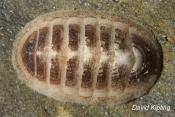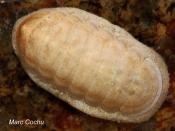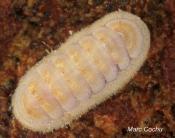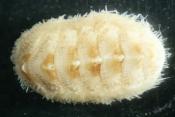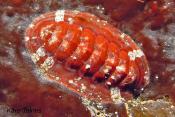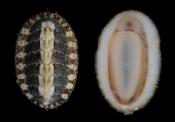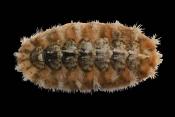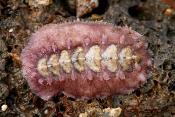The Polypacophora - colloquially known as chitons (pronounced kite-ons) or Coat of mail shells - are some of the more unusual looking of the molluscs. They have eight shell plates embedded in the mantle and surrounded by a fleshy girdle. They possess a muscular foot (identical to that found in Gastropods) which is used to attach the animal and move around. They live attached to rocks, the eight shells allowing the animal to move across relatively uneven surfaces. If dislodged it can roll into a ball for protection. While chitons are not uncommon around the British and Irish coasts they are often overlooked.
Chitons feed by scaping vegetation from the rock surface by means of a radula (a ribbon of hardened teeth which are continuous replaced as old ones wear out). The animal also has a taste receptor that is periodically extended to test the next mouthful. The food is covered in mucus before beng swallowed.
On the underside there is U-shaped groove (known as the mantle cavity) running around the foot. A number of gills hang down into this on each side. They are covered in cilia which moves water across them and the gills extract oxygen from the water as it passes.
The sexes are separate with eggs and sperms being released freely into the water (via the mantle cavity). Once an egg is fertilised it it develops into a trochophore larvae which swims for about six hours before settling on a suitable hard substrate. Initially six plates develop as the larvae elongates before a final plate is added at each end.

